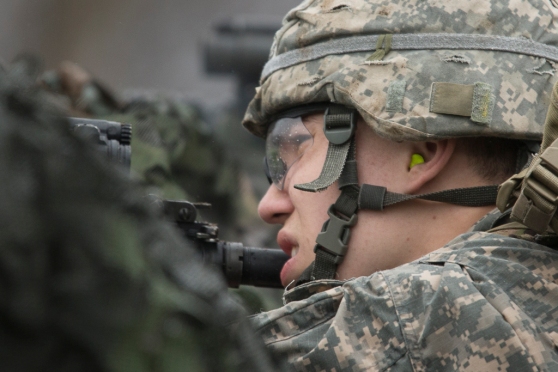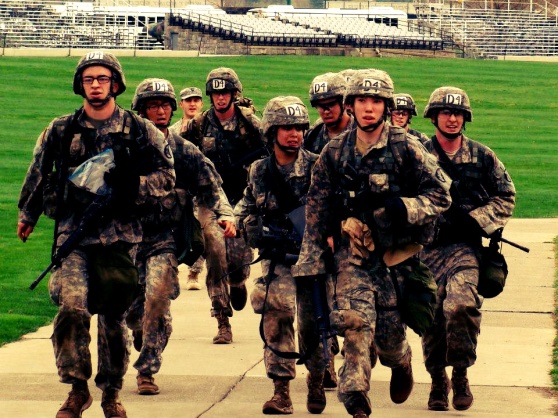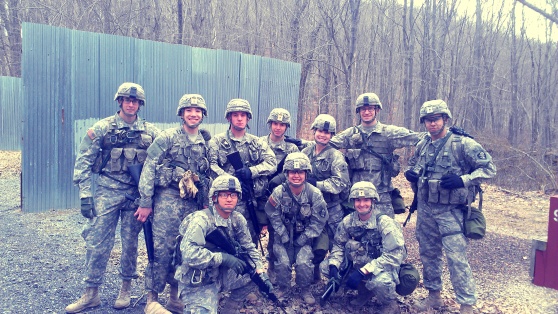Within the era of decreasing Federal and state funding for excessive and unnecessary programs, it is logical to presume that the provision of “vouchers” may come under scrutiny for being an “excessive” government program. However, the states of Indiana, Michigan, Ohio, and the District of Columbia have deemed this political area worthy of pursuing. A controversial portion of this policy includes the fact that parents strongly desire to determine where their children attend school, and may resent government involvement in this seemingly autonomous decision. The formal governmental institutions with the largest influence on voucher policy are the Chief Executive and Congress. Additionally, the informal governmental institutions with the largest influence on this policy area are the Media and Interest groups. The current state of voucher legislation is that there exists Federal Policy on personal school choice and vouchers, which consists of state and Federal funding of private schooling in place of public schooling. However, hindering the progress of such legislation is the fact that private institutions providing schooling within a state often designate a particular subgroup of students they wish to include within the student body of their institutions, and this requires state and Federal legislatures to provide oversight of these designations; including low income families and those attending school systems with “below-average” achievement.
Both the President and Congress have exerted a large influence over the progression of voucher legislation, along with state legislatures. For instance, during the 2009 fiscal year, both Congress and President Obama ceased funding for the Washington, D.C. Opportunity Scholarship Program, the first federally-funded voucher program. However, during the 2011 fiscal year, Congress renewed its funding for this legislation.[1] The initial support for the abovementioned voucher legislation existed abundantly and waned briefly within fiscal year 2009, and was renewed in fiscal year 2011. The voucher program implemented by Ohio is designated as the “EdChoice” program, and to ensure funding for this legislation, Ohio has expanded the budget for educational programs[2]. Indirectly, the United States Congress will control the funding options available to Ohio (through grants, grants-in-aid, etc.), and thereby dictate the extent to which Ohio is able to pursue their legislation goals. Similarly, Indiana (a state with one of the largest voucher programs[3]) is attempting to increase the amount of funding available for each child attending private school under the voucher program from $4,500 per child to $6,500 per child, and to expand the program to include “…disabled children, foster children, siblings of voucher recipients and children of active-duty military servicemembers and veterans to receive vouchers regardless of family income.”[4] Schools must meet certain educational criteria listed within the Indiana legislation to be eligible to accept voucher students.[5] The support for voucher legislation by the United States House of Representatives and Senate are dictated by economic circumstances, the political party in control of Congress, and the political affiliation of the President. Economic circumstances dictate the amounts of Congressional aid available to the states, and the willingness of the Federal Government to provide funding for non-necessary educational reform programs, such as a fledgling voucher program. Furthermore, the parties in control of the House and Senate, along with the political affiliation of the President determine the level of funding and aid available to states through the policy agenda and policy goals of that party. Congress continued to fund the D.C. Opportunity Scholarship Program in 2011 due to the political reason of a impasse in the creation of the 2011 Federal budget between the Republicans and Democrats.[6]
In the course of American educational reform and the creation of voucher programs in many states, both Interest groups and the Media have become thoroughly involved, and included in this group is the American Association of University Women. Posted on the webpage of the American Association of University Women, is a critique of Michigan’s proposed voucher legislation, within which is a noteworthy negative “slant” towards school voucher legislation. The author of this article testified before the Michigan Senate on this matter, illustrating the influence of this particular activist group.[7] Barbara Bonsignore, the director of public policy for the AAUW branch in Michigan, dictated on the blog of the Michigan branch of the AAUW “I have seen this firsthand in Michigan and know that we can have success fighting back against school voucher schemes if we remain vigilant.”[8] The methods through which the American Association of University Women attempt to influence public policy include “coalition building”, grassroots campaigns[9], advocacy, and voter education[10]. She also authored a letter to members of the AAUW to contact Senator Carl Levin to remove a portion of a bill containing voucher provisions.[11] The action of groups such as the American Association of University Women has significantly impacted the presence of voucher legislation in Michigan. The popularity of media outlets, and the tendency of citizens to consume media allows for positive and negative coverage to thoroughly influence the opinion of citizens, who elect those representatives that share their views. Therefore, the media outlets described exert a powerful influence on voucher legislation.
The intent of voucher policy is the usage of private schooling, funded by State and Federal governments, to provide assistance to those students with below-average familial income or those attending schools performing inadequately, among many other disadvantages[12]. While only marginal improvements have been noted in students attending public schools versus private schools[13], both “Informal” and “Formal” Political Actors have noticed these improvements. Amongst the “Formal” political actors described above, the most influential is the United States Congress. Political strife between the Republican and Democratic parties in the House and Senate dictate the Federal support of vouchers, due to the Republican desire to maintain voucher programs, and the overall disapproval of such programs by the Democrats.[14] Within the “Informal” political actors, the most influential are interest groups (such as the AAUW), due to their immense ability to create “grassroots” campaigns, initiate community action for political causes, and exert influence on voters through advocacy for their causes and the general release of information on these causes. To further increase the influence of interest groups such as the AAUW, media actions are taken, allowing this group to act as both an Interest group and a member of the media. Barbara Bonsignore, the woman responsible for testimony within the Michigan Senate on the detrimental effects of voucher legislation published a blog post elaborating on the major shortcomings of the very concept of school vouchers, and therefore acted as a media outlet. However, the AAUW acting as an Interest group illustrated the true power of Interest groups as informal actors; able to influence voucher legislation through testimony in a “Formal” political institution, create a “grassroots” campaign to stymie support for voucher legislation in Michigan, and attempt to instigate political supporters to contact their Senator. For these reasons, the most influential “actor” within the realm of voucher legislation is the Interest group, due to their ability to lobby, create “grassroots” campaigns, successfully advocate for issues on their political agenda, and inform likely supporters of their position on political issues.
In conclusion, the future of voucher legislation within the states of Ohio, Indiana, and the District of Columbia will be dictated by the political affiliation of the United States Congress and President, the level of success reached by the aforementioned states, and the ability of interest groups to exert influence over policymaking institutions. With regards to the political affiliations of the United States Congress and President, the United States currently exists in a state of “Divided Government”[15]. President Obama desires to improve the conditions of schools across America[16], but has little support from Democrats for voucher legislation[17] . In contrast, the Republican-controlled Congress[18] will differ greatly in their opinion on voucher legislation, with Republicans wishing to expand the program. This divide will serve to make advancement difficult, but possible. The success of the voucher programs within Indiana, Ohio, and the District of Columbia bode well for the futures of voucher legislation within those states, and it is noted that “…Nine of 10 randomly assigned studies of voucher programs show that student outcomes improve for participants.”[19] Also, it is included that thirteen states are increasing the range of schooling options available to students, and twenty-nine others are considering these increases. Generally, voucher programs are more inexpensive than the alternative public schools.[20] Interest groups, however, are putting forth much effort to ensure the demise of voucher programs. Due to the successes encountered by states utilizing voucher programs and the promising financial information regarding the expenses of these programs, in light of a faltering economy, voucher programs will continue to slowly spread to states with extremely poor school systems, and later move to many other states wishing to realize the benefits of a voucher program.
Works Cited
American Association of University Women: Michigan. “AAUW of Michigan Public Policy Principles 2010-2012.” Accessed April 5, 2013. http://aauwmi.org/policy_priorities.html.
American Association of University Women. “What We Do.” Accessed April 5, 2013. http://www.aauw.org/what-we-do/public-policy/.
American Association of University Women. “Fighting School Vouchers in Michigan.” Accessed April 4, 2013. http://www.aauw.org/2013/01/31/school-vouchers-in-michigan/.
Babcock, Megan CIV. Text Messages to the Author. During the dates of April 3, 2013 and April 4, 2013, Ms. Babcock read an electronic copy of my paper, and advised me on the usage and mechanics within my paper through text messaging. For instance, Ms. Babcock informed me of the portions of my paper utilizing a large amount of words such as “within” and “therefore”, and recommended that I alter those portions, allowing me to improve the overall readability of my paper. She also identified misspellings and other language errors. 3-4 Apr. 2013.
Barbara Bonsignore, “Background_Info_for_MVP_Candidate_Survey”, Unknown (2010): 1. http://aauwmi.org/state/Public%20Policy/Background_Info_for_MVP_Candidate_Survey.pdf.
“Democratic Party on Education,” OnTheIssues. “Democratic Party on Education.” Accessed April 5, 2013. http://www.ontheissues.org/celeb/Democratic_Party_Education.htm.
Fowler HR, Aaron JE. The Little, Brown Handbook. 12th ed. Upper Saddle River: Pearson Education, 2012. Print.
GOP. “Gop.gov – The Website for the House Republican Majority.” Accessed April 5, 2013. http://www.gop.gov/.
Indiana General Assembly. House Enrolled Act. 117th Gen. Assy., 1st sess., 2011. Gen. Assy. Doc. 1003 (2011).
Kennedy, Vincent CDT A-2. Assistance given to the author, written discussion. During Lab 5, CDT Kennedy lent me his course notebook, which contained his checklist for the completion of the Policy Paper. I utilized the information about the word count maximum to complete my paper and confirm that it met the appropriate criteria. West Point, NY. 21 Mar. 2013.
Kober, Nancy and Alexandra Usher. “Keeping Informed about School Vouchers: A Review of Major Developments and Research.” Unknown (2011): 1-3. http://www.cep-dc.org/displayDocument.cfm?DocumentID=369.
Mackinac Center for Public Policy. “Time to Take School Choice in Michigan to the Next Level.” Accessed April 5, 2013. http://www.mackinac.org/15509.
Miller, Keith CDT D-4 ’15. Assistance given to the author, oral and written discussion. CDT Miller and I spoke on the topic of voucher programs on April 3, 2013 and our discussion contributed to this paper in the realm of gauging the successes and failures of voucher policy, where this policy is likely to expand to, and future roles of voucher legislation, along with the origination of this political policy area. CDT Miller proofread a printed copy of my Policy Paper on April 4, 2013, and provided feedback on both content and mechanics, dictating to me the areas in which I need to improve my paper. West Point, NY. 3-4 Apr. 2013.
Smith, Brandon. “House Committee Hears Bill to Expand School Voucher Program.” Indiana Public Media Blog (blog). February 5, 2013. http://indianapublicmedia.org/news/house-committee-hears-bill-expand-school-voucher-program-44322/.
StateImpact Indiana. “So You Want to Go to Private School? An Indiana School Voucher Guide.” Accessed April 4, 2013. http://stateimpact.npr.org/indiana/tag/school-vouchers/.
StateImpact Ohio. “So How Does Ohio’s Voucher Program Work Anyway?” Accessed April 4, 2013. http://stateimpact.npr.org/ohio/tag/vouchers/.
The White House. “K-12 Education.” Accessed April 5, 2013. http://www.whitehouse.gov/issues/education/k-12.
U.S. Congress. Senate. Scholarships for Opportunity and Results Act. 112th Cong., 1st sess. 2011. S. Doc. 471 (2011).
wiseGEEK. “What is a Divided Government?” Accessed April 5, 2013. http://www.wisegeek.com/what-is-a-divided-government.htm#.
[5] Indiana General Assembly. House Enrolled Act. 117th Gen. Assy., 1st sess., 2011. Gen. Assy. Doc. 1003 at Chapter 4 (2011)
[12] U.S. Congress. Senate. Scholarships for Opportunity and Results Act. 112th Cong., 1st sess. 2011. S. Doc. 471, at Section 2, line 3 (2011)
[19] “Time to Take School Choice in Michigan to the Next Level,” Mackinac Center for Public Policy, accessed April 5, 2013, http://www.mackinac.org/15509.











